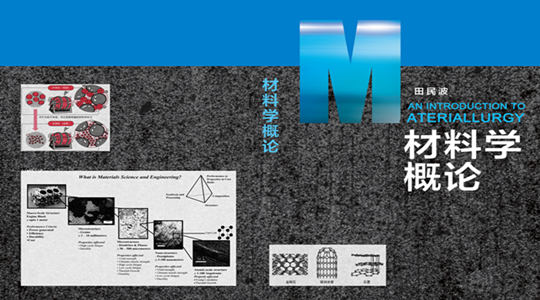
当前课程知识点:Culture and Tourism > Week 1: Cultural Tourism: Definitions and Concepts > 1.1 Introduction course outline and UNESCO World Heritage Program > 1.1.3 Introduction of UNESCO World Heritage Program(2)
返回《Culture and Tourism》慕课在线视频课程列表
返回《Culture and Tourism》慕课在线视频列表
大家好
在这一节中
我们将一起讨论什么是遗产以及世界遗产项目的起源
这是联合国教科文组织的标志。
让我来向大家介绍一下世界遗产项目及其背景。
世界遗产的概念来源于
《世界文化和自然遗产保护公约》。
该公约是在战后,
20世纪的国际合作背景下产生的。
所以尽管普遍遗产的概念有着悠久的历史,
但在战后国际社会的反战情绪,
渴望和平的共识作为推动建立国际合作的思想基础,
促进公约的“人类文化遗产”,
出现“普世价值”的概念,
在19世纪从欧洲带来的
不同于以往的,新传统保护文物保护的概念。
将文化遗址保护与自然保护相结合的想法
来自美利坚合众国。
白宫在华盛顿特区召开了一次会议,
呼吁在1965年始成立“世界遗产信托基金”,
保护“世界上最优美的自然和风景名胜区以及历史遗迹,
造福全世界人民的现在和未来”。
1968年,国际自然保护联盟(IUCN)
为其成员提出了类似的建议。
这些建议已提交于1972年
在斯德哥尔摩举行的联合国人类环境会议。
那么,联合国教科文组织定义的世界遗产是什么呢?
遗产是我们过去的遗产,是我们今天生活的东西,
是我们留给后代的东西。
我们的文化和自然遗产是生命和灵感不可替代的源泉。
1972年《世界遗产公约》最显著的特点是,
在一份文件中,
它将自然保护和文化财产保护的概念统一起来。
《公约》认识到人与自然相互作用的方式,
以及维持两者之间平衡的基本需要。
总体效益来批准该公约,
属于一个国际社会的普遍赞赏
和关注的重要属性,
体现文化多样性的世界杰出范例和自然保护的声音,
这要求公约缔约国携起手来一起保护和珍惜。
自然和文化遗产表达了共同的承诺,
一起为后代保护我们的遗产。
因此,作为公约缔约国
和列入《世界遗产名录》的地点
所带来的声望常常成为提高遗产保护意识的催化剂。
因此,批准的一个关键好处,
尤其是对发展中国家来说,是获得世界遗产基金。
每年提供约400万美元,
以协助缔约国确定、保护和促进世界遗产。
还可提供紧急援助,以便采取紧急行动,
修复人为或自然灾害造成的损害。
在列入《濒危世界遗产名录》的遗址方面,
国家的注意力和资金
连同国际社会一起聚焦于
这些特别受到威胁的遗址的保护需要上。
如今,世界遗产的概念
已经得到了人们充分的认识,
列入世界遗产名录的地点就像一块磁铁,
吸引着国际合作,
它们可能会从各种渠道获得用于遗产保护项目的资金援助。
列入世界遗产名录的遗址
还受益于制定和实施一项全面管理计划,
该计划规定了适当的保护措施
和监测机制。
为了支持这些,专家们提供技术培训
指导当地的现场管理团队。
最后,将一处遗址列入《世界遗产名录》
提高了公众对该遗址及其突出价值的认识,
从而增加了该遗址的旅游活动。
当这些规划和组织良好,尊重可持续的旅游原则,
他们可以为基地和当地经济带来重要的资金。
鼓励各国签署《世界遗产公约》,
确保保护本国的自然
和文化遗产是一项重要的任务。
因此,还有其他重要的使命,如鼓励公约缔约国
提名本国领土内的地点
列入世界遗产名录。
鼓励缔约国制定管理计划,
建立世界遗产保护状况报告制度;
通过提供技术援助和专业培训,
帮助缔约国保护世界遗产;
并为面临直接危险的世界遗产遗址提供紧急援助。
还有另外三件重要的事你需要记住。
第一,支持缔约国公众意识建设活动
促进世界遗产的保护;
第二,鼓励当地人参与保护他们的文化和自然遗产;
第三,鼓励在保护世界文化
和自然遗产方面的国际合作。
这是第一部分。
在下一节中,我将继续讨论文化遗产的意义。
感谢聆听。
-1.1 Introduction course outline and UNESCO World Heritage Program
--1.1.1 Introduction of culture and tourism course outline
--1.1.2 Introduction of UNESCO World Heritage Program(1)
--1.1.3 Introduction of UNESCO World Heritage Program(2)
-1.2 Cultural Heritage-1
--1.2.1 The meaning of culture heritage
--1.2.2 Criterion(i): masterpiece of human creative genius
--1.2.3 Criterion(ii): exhibit important interchange of human value
--1.2.4 Criterion(iii): bear a unique or at least exceptional testimony
--How can the public understand the importance of heritage?
-1.3 Cultural Heritage-2
--1.3.1 Criterion(iv): an outstanding example in human history
--1.3.2 Criterion(v): represent a culture or human interaction with environment
--1.3.3 Criterion(vi): associated with living traditions of outstanding universal significance
-1.4 Natural Heritage
--1.4.1 Natural heritage features, formations and criterions
--1.4.2 Cases studies of natural heritage
--Cultural landscape meanings: The case of West Lake, Hangzhou, China
--How to access heritage of your hometown?
-2.1 Mixed Culture and Natural Heritage
--2.1.1 Mixed heritage operational guidelines and cases (1)
--2.1.2 Mixed heritage operational guidelines and cases (2)
--2.1.3 Mixed heritage operational guidelines and cases(3)
-2.2 Authenticity, Integrity and Cultural Routes
--2.2.1 How to determine authenticity and integrity
--2.2.2 Heritage routes and heritage canals (1)
--2.2.3 Heritage routes and heritage canals (2)
--What do you think about cultural heritage categories?
-2.3 Special Heritage and Sustainable
--2.3.1 Physical remains of the history of technology and industry
--2.3.2 Transboundary Heritage, Serial Heritage, Serial/Transnational Heritage
--2.3.3 Intangible cultural heritage
--2.3.4 UNESCO World Heritage and Sustainable Tourism Programme
--Recovering the Memory of Ourselves for the Sustainable Cites
--Week 2 quiz
--What do you think about cultural heritage categories?
-3.1 The Australia’s Heritage System and Sydney Opera House
--3.1.1 The Australian Heritage System
--3.1.2 Case Study: The Sydney Opera House
-3.2 Role of the ISCCL and Cultural Landscape (1)
--3.2.2 Uluru-Kata Tjuta National Park
--3.2.3 Honghe Hani Rice Terraces
-3.3 Role of the ISCCL and Cultural Landscape (2)
--3.3.1 West Lake cultural landscape (1)
--3.3.2 West Lake cultural landscape (2)
-3.4 Rural Landscapes as Heritage
--3.4.1 ISCCL Principles Concerning Rural Landscapes as Heritage
-3.5 Case Study: Mongolian Altai
--3.5.1 Nature Culture Integration & the Mongolian Altai(1)
--3.5.2 Nature Culture Integration & the Mongolian Altai(2)
--Week 3 quiz
--Discussion: What do you think is the role of ISCCL?
-4.1 Introduction of the Meaning of 'landscape’
--4.1.1 Brief introduction of landscape and culture
--4.1.2 The conceptual framework of cultural landscape
-4.2 Landscape Values
--4.2.1 The word “landscape” itself and differences in Western, Eastern
--4.2.2 Cultural significance for heritage source
--Discussion: What do you think the cultural landscape attracts you?
-4.3 Reading the Landscape: Identification and Assessment
--4.3.1 Planning model for heritage conservation management policy
--4.3.2 Cultural landscape resources evaluation steps
--Article: Cultural mapping: Intangible values and engaging with communities with some reference to As
-4.4 Case Study: Wingecarribee Historic Landscape
--4.4.1 Case study:Wingecarribee historic landscape study(1)
--4.4.2 Case study:Wingecarribee historic landscape study(2)
--Week 4 quiz
--Discussion: What should we do to strengthen the protection of cultural landscape?
-5.1 Indigenous Tourism
--5.1.1 Indigenous tourism background
--5.1.2 World heritage and indigenous peoples
--5.1.3 Tourism issues at Canadian indigenous world heritage sites
--Discussion: What challenges indigenous World Heritage faces?
--Article: State conceptions of indigenous tourism in Chile
-5.2 Case Study and Conclusion: Great Expectations for Tourism
--5.2.1 Case study Pimachiowin Aki
--5.2.2 Conclusions:Great Expectations for Tourism
--Disussion: Do you have any experience of indigenous tourism?
--Week 5 quiz
-6.1 The Definition of Heritage in Heritage Performance Study
--6.1.1 The definition of heritage in heritage performance study
--6.1.2 Heritage performance and meaning making
--6.1.3 Two key issues emerging from qualitative study
-6.2 Heritage Performance - Evidence from Australia, England and USA
--6.2.1 Heritage performance - reinforcement
--6.2.2 Heritage Performance - inter-generational communication and social values
--6.2.3 Heritage performance - recognition and respect
--6.2.4 Heritage performance - education
--Article:Theorizing museum and heritage visiting
-6.3 The Conclusion of Heritage Performance
--6.3 The conclusion of heritage performance
--Week 6 quiz
--Discussion: What kinds of heritage performances have you learned in this week?




